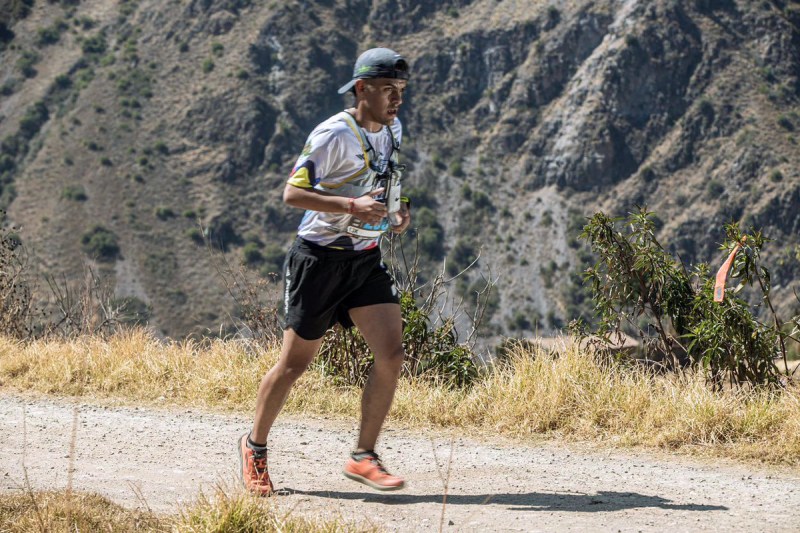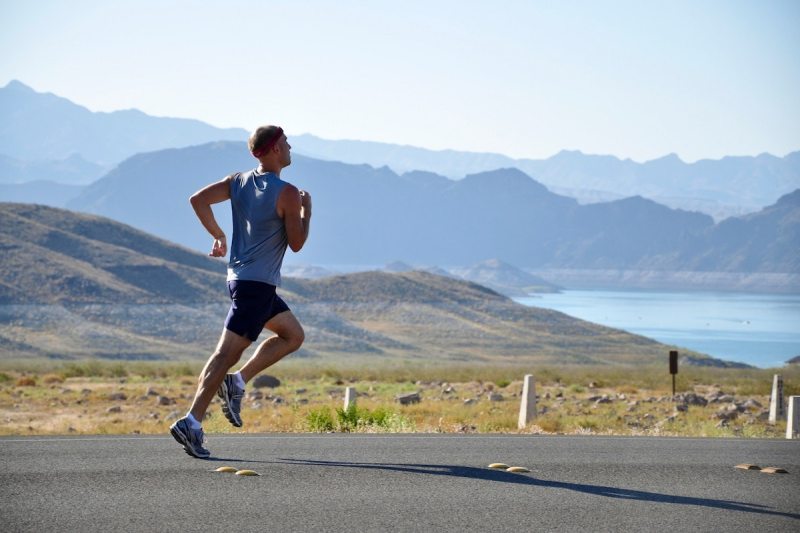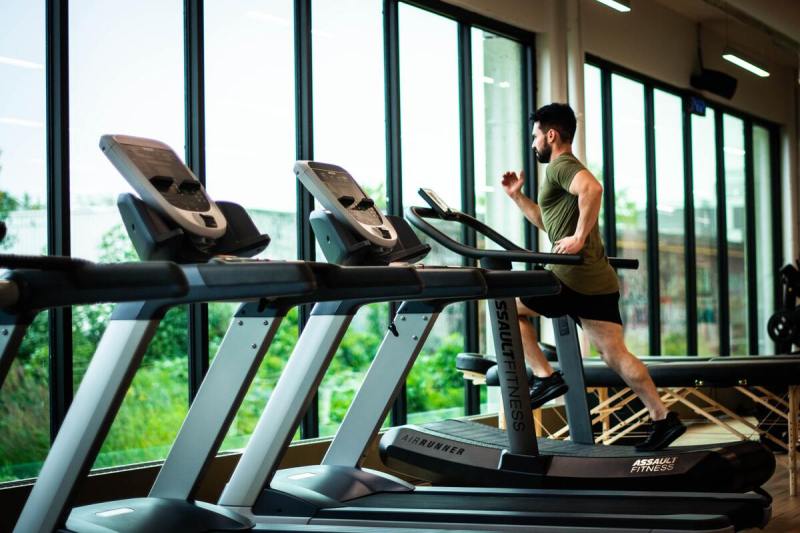There are many benefits of long endurance runs. Long runs burn calories and help you manage your weight, improve the efficiency of your aerobic system, increase mitochondrial density, and improve fat oxidation capacity in your muscles. Running can also help build your mental strength.
However, we don’t always have an hour or more to run; sometimes, we don’t even have the 30 to 45 minutes ideal for a solid workout. On busy days, it can be a miracle just to get in exercise, but it’s almost always better to do something rather than nothing unless your body needs a rest day to recover.
The good news is that even short, 20-minute running workouts can be an effective way to improve your fitness and progress your training. In this article, we’ve listed several 20-minute workouts for runners of various levels and training goals to give you a few ideas for when you’re short on time but want to squeeze a quick run into your day.

Is a 20-minute run a good workout?
Depending on your current fitness levels and your specific health and running goals, a 20-minute run can be a good workout. Although longer workouts are necessary for any run plan that trains you effectively for longer distance races (such as the 10k, half marathon, and marathon), fast workouts can improve your health and
According to the Centers for Disease Control and Prevention’s (CDC) Physical Activity Guidelines for Americans, adults should strive to get at least 150 minutes of moderate-intensity or 75 minutes of vigorous-intensity aerobic exercise per week. Unless you’re jogging very slowly, running will typically qualify as “vigorous” physical activity. Therefore, doing just four 20-minute runs per week will satisfy the exercise guidelines for adults and should help decrease your risk of lifestyle diseases such as heart disease and stroke, hypertension, obesity, metabolic syndrome, type 2 diabetes, and certain cancers.
According to the CDC, the moderate-intensity cardio zone corresponds to a heart rate range of 50%-70% of your maximum heart rate, while vigorous-intensity cardio is associated with a heart rate of 70%-85% of your max. Furthermore, studies suggest that workouts as brief as 10 minutes can be effective in boosting health and fitness.
The best way to make a fitness running workout effective is to increase the intensity. High-intensity interval training (HIIT) has been shown to provide the same cardiovascular and metabolic benefits and burn the same number of calories as steady-state exercise in 40% less time. Therefore, if you do a 20-minute HIIT running workout (intervals, hills, fartlek run, etc.), your workout efforts will be approximately equivalent to a 34-minute steady-state run. That’s a savings of almost 14 minutes!

How many calories can you burn in 20 minutes?
If you get your heart rate up adequately, you can burn a decent amount of calories in only 20 minutes. If you want to maximize the number of calories you burn, you can always up your speed or incline.
Unfortunately, there is no one set number that applies to everyone. Factors like weight and height play a role in how much you will burn from running 20 minutes straight. However, on average, someone will burn between 233 and 311 calories when running at a 10-minute pace for 20 minutes.

20-minute walk/run workout for beginners
If you are a beginner just starting out with running, a combination of walking and running is an effective approach to building cardiovascular fitness while getting your bones, joints, muscles, and connective tissues accustomed to the stresses of running. Essentially, walking breaks give you a chance to catch your breath and slow your heart rate. Because walking is a lower-impact activity, your joints and muscles also get a break.
However, during this quick walk/run workout, you want to make sure you keep moving during the walking breaks. Don’t stop after your run intervals; try to walk as briskly as possible.
- Warm-up: 2 minutes of brisk walking.
- Workout: Run 1 minute, walk 1 minute, and repeat for eight reps, making sure to walk the final minute nice and slow to cool down.

20-minute hill workout for beginners
Running on hills is a great way to combine speed and strength training workouts into one session, maximizing the brief amount of time you have to exercise. Running each hill repeat at maximum effort will increase your speed and turnover, and because you’re fighting against gravity to run uphill, you’ll build power and strength in your legs.
Use good form, vigorously pumping your arms to drive your knees up. Use short, quick steps and lean slightly forward into the hill.
Jog back down after each hill repeat.
- Warm up by jogging for 5 minutes to a fairly steep hill that will take you 30 to 45 seconds to sprint up.
- Complete as many hill repeats as you can in 20 minutes.

20-minute incline treadmill workout for runners
This is a progressive incline treadmill running workout that involves gradually but sequentially ramping up the incline on the treadmill.
You will keep the same pace throughout the workout, but because the incline is increasing, the intensity or effort level will increase.
- Begin by running for 2 minutes at a 0% grade.
- During minutes 2 to 4, increase the incline to a 1% grade.
- During minutes 4 to 6, increase the incline to a 2% grade.
- Continue increasing the incline by 1% every 2 minutes, ending at an 8% grade for minutes 16 to 18.
- From minutes 18 to 20, gradually decrease the incline back to 0% to cool down.

20-minute 5k training workout
This 20-minute track workout can help you train for a 5k race.
- Warm up by running 800 meters (two laps), or about 4 to 5 minutes.
- Run three 1,000-meter sets at a rate that is 3 to 5 seconds faster than your goal 5k pace.
- After the first two laps, complete a 200m (half-lap) recovery and a full lap (400m) recovery after the last interval to cool down.

20-minute fartlek run
Fartlek is a Swedish word for “speed play.” Fartlek runs involve interspersing intervals or short bursts of fast running during a regular distance run. The goal is to try to maintain a fairly normal training pace during the recovery intervals rather than slow down significantly.
Warm up by running at your normal training pace for 3 minutes. Then, run eight sets of the following: 90 seconds of hard running, 30 seconds of easy, and cool down with 1 minute of easy running.

20-minute tempo run
Tempo runs are performed at your lactate threshold pace. This is when your muscles shift from producing the majority of the energy (ATP) they need from aerobic metabolism to producing ATP via anaerobic glycolysis. This change is marked by a significant increase in fatigue and a burning sensation associated with the rise in acidic metabolic byproducts of anaerobic glycolysis.
Tempo runs help condition your body to rely on aerobic metabolism at higher intensity efforts.
To do a tempo run, run for 20 minutes at your threshold pace. The lactate threshold occurs around 83%-88% of your VO2 max, so your tempo pace would be the pace you are running at 83%-88% of your VO2 max according to your lab results, or roughly the pace you could hold at max effort for an hour of running. For most runners, this should be about 15 to 20 seconds per mile slower than the goal 10k race pace.
Remember, while there are undeniable benefits of longer running workouts, if you’re deliberate with your training, even a 20-minute run can improve your fitness. Have a great workout!




